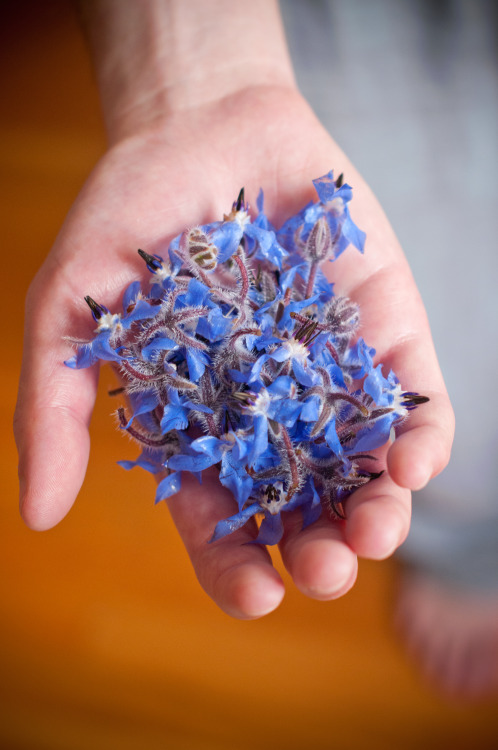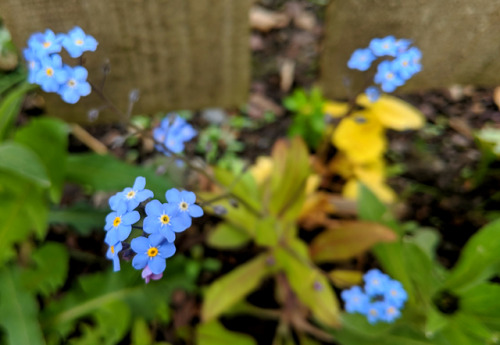#borago officinalis
True Blue Flowers at the allotment /part 1
You know I love blue flowers, but you might have not noticed how uncommon ‘true blue’ flowers actually are in nature. In the animal world, the presence of this colour is often just an optical effect caused by how light is absorbed and refracts in particular structures. In plants, however, different shades of real blue are the result of chemical changes that alter the red and purple anthocyanin pigments present in a large variety of species.
This is not a common process and it has proven to be particularly challenging to replicate artificially. If you like technical details, here you can read about how the first -passably- blue Chrysanthemum was created.
Some plant families though, seem to have mastered this prodigious alchemical feat and produced a good variety of sky-coloured species, which have been further diversified artificially in as many cultivars. Probably the most prominent of these families, the Boraginaceae has gifted us with some of the most common blue wildlfowers you could encounter in temperate areas, and plenty of garden ornamental plants.
In the photos above you can see members of this family currently blooming at my veg plot and, if you look closely, you can see how the flower buds on all these plants look pink, but the pigments start changing as they open to reveal different shades of true blue:
-Borago officinalis, borage: annual herbaceous
-Lithodora diffusa ‘Blue Star’&‘Heavenly Blue’: evergreen subshrubs
-Brunnera macrophylla ‘Jack Frost’, Siberian bugloss: deciduous herbaceous perennial
-Myosotis scorpioides, water forget-me-not: herbaceous perennial
-Myosotis arvensis, field forget-me-not: herbaceous annual or short-lived perennial
Now check back in a few years please, I’m on my way to holding the national collection of Boraginaceae and the largest variety of blue flowers in one garden ;)
Post link









